617 Search Results for tell me about it
April 1, 2012
by Robin Parker -
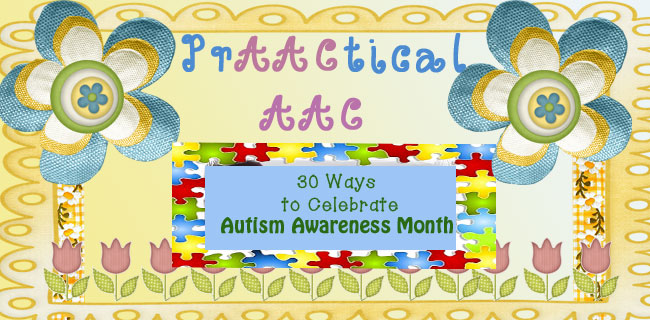
Please check out the most recent set of suggestions here. We love getting EVERYONE involved in Autism Awareness Month. We like to take a goal focused approach to our Autism Awareness Month activities by choosing projects that facilitate positive attitudes & discussions. We pass out materials, have contests, go to events, do extra talks, and try and engage EVERYONE we know and even some we do not know. We do a lot of shopping (with small amount of money, but we have to EAT and accessorize). Our families, pets, friends, and students all participate. It is a month filled with purposeful fun. Here are some of the things we will be doing. Please share any activities or projects that you know about. Bake, share, & eat some desserts. Need inspiration?.. try these Puzzle Piece Rice Crispy Treats Join the webinar Autism Explosion by Dr. Coplan will be shown... [Read More...]
March 28, 2012
by Carole Zangari -
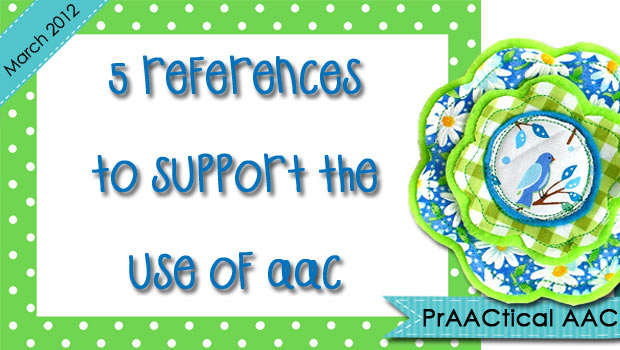
When I took my daughter to a specialist awhile back, she recommended a treatment that was a bit extreme. Her verbal explanation for the expensive and involved treatment made sense, but I still wasn’t convinced and asked it there was something we could read that explained the scientific underpinnings of the approach. She disappeared for a moment and came back with a task force report on the treatment that reviewed literature on this approach. Reading through it and seeing the studies, critiques, and responses helped us make an informed decision. – Chances are, many of you have had similar experiences. Trust in our healthcare professionals is critical, but when it comes to big decisions, we want to know the science that stands behind the options. – Making the decision to use AAC is a huge one for all of us, but families are especially burdened with its weightiness. Not only... [Read More...]
March 17, 2012
by Carole Zangari -
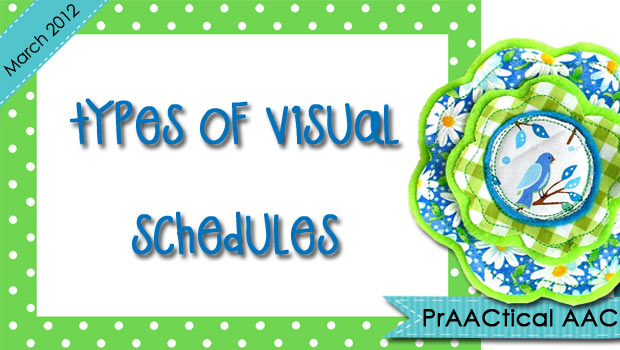
When people think about visual schedules, they tend to think about a classroom schedule with PCS for each major activity of the day. These are great and we look for them whenever we do classroom visits. In this post, we hope to inspire some of you to use other types of visual schedules as well. We haven’t quite worked out the right terms for these (and we welcome your suggestions) but, conceptually we know that there are three main levels of visual schedules. Each level conveys information about what is happening in a specific segment of time. – At the Calendar Level, the schedule represents what’s happening throughout the month and/or week. – At the Schedule Level, we’re representing the events of a particular day, a portion of a day, or a session (or class period). – At the Task Level, the schedule reflects discrete steps of an activity or... [Read More...]
February 25, 2012
by Robin Parker -
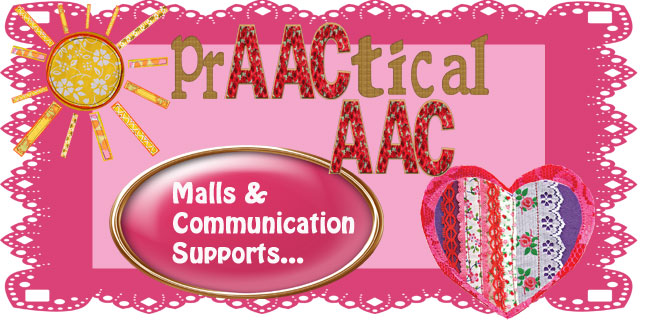
I was in the mall with my teenage daughter yesterday (because that is her favorite place to go) and we saw a group of adults with developmental disabilities. Some of the group members were in wheelchairs and others walked. It appeared that they were on a ‘field trip’ or community outing. My daughter has been ‘working’ with me since she participated as a ‘typical’ peer for various pragmatic groups while she was in preschool. She has been known to regularly (and not always so quietly) identify people who I must know since “they probably go to my clinic”. This would occur even if we were nowhere close to the geographical location of ‘my’ clinic. She has been known to find people who probably need my services so I can help them ‘talk better’. Although my daughter seems to be doing a lot of identifying without any formal training, I have to... [Read More...]
February 23, 2012
by Carole Zangari -
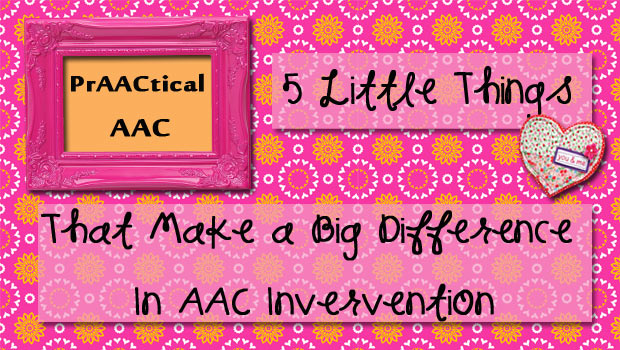
“If you think you are too small to be effective, you have never been in bed with a mosquito.” Betty Reese – Little things can make or break a good streak of AAC implementation. Here are some things that we’ve come to appreciate. They’re small in size, expense, or time demands but pay off in a big way. – 1. Wait time: There’s nothing like a 10-second expectant pause and controlled access to help someone learn to respond without more intrusive prompts. – 2. Clear plastic jars with screw-on lids (nothing beats these for limiting access so that kids are tempted to make a request) – 3. Button covers for the iPad, like these from BubCap. Amazing how a tiny piece of plastic can keep an activity or conversation from derailing. – 4. Bragging (authentically) about a colleague. “Ms. Mama, I have to tell you how awesome Polly Para was... [Read More...]
February 20, 2012
by Carole Zangari -
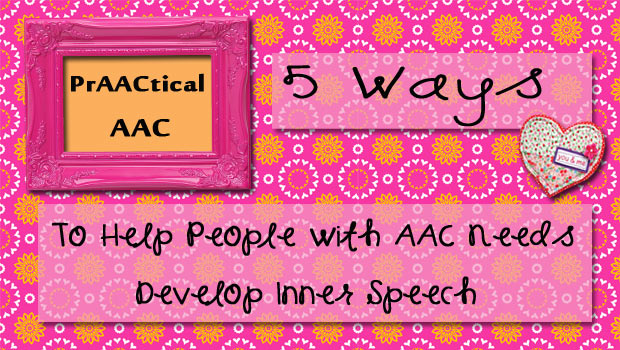
Recent research has strengthened this clinician’s belief that developing inner speech is an important strategy for many people who use AAC and are working to build their literacy skills. But how do we teach someone to develop that inner voice? Here are some ideas. – 1. Begin by using a ‘think aloud’ strategy to make your internal thought processes obvious to the person who uses AAC. Articulating your thoughts as you work through different communication and literacy learning processes gives the learner insight into what you are thinking. Once they are used to that, it is easier to introduce the concept of private/inner speech. – 2. Use explicit instruction. “Say it to yourself.” “Say it in your head.” Using natural gestures, like tapping your temple, can be helpful as well. We’ve found that this allows us to reduce the prompting over time. Fade the verbal prompt and continue the gestural one,... [Read More...]
February 15, 2012
by Carole Zangari -
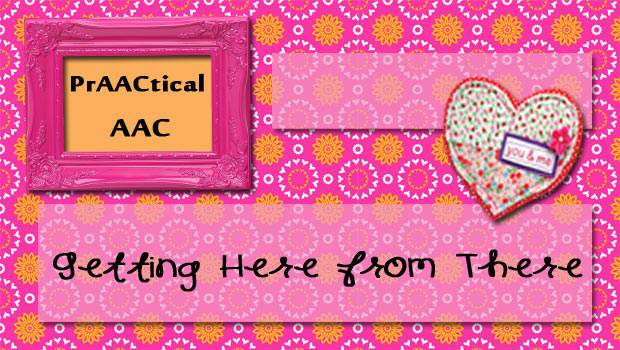
We wanted to take a breather from all the busyness to reflect on the year and to offer up some words of appreciation. For us, 2011 started with our version of a retreat: a long walk in the sun, a half day of venting our frustrations and a half day of planning new projects interspersed with lunch at the beach. (There might have been a bottle of wine in there somewhere, too.) We’d both been feeling more than a bit discouraged that the quality of AAC services is still so spotty. There are some fantastic SLPs and teachers, of course, but not enough to go around. The ‘good ones’ are too busy. And the not-so-good ones were doing too much damage. It seemed to us that too many folks with significant communication challenges weren’t getting what they needed and that stressed us out to no end. Just when we had calmed down, we... [Read More...]
February 11, 2012
by Carole Zangari -
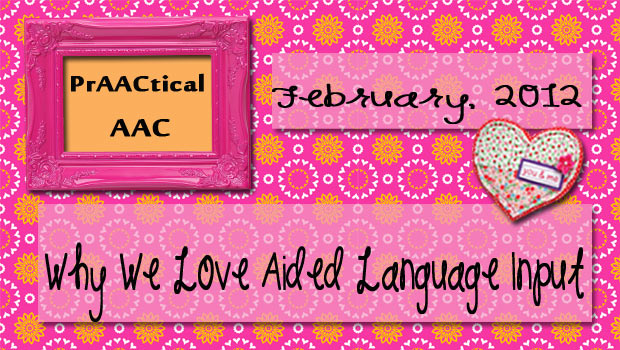
The concept of Aided Language Input is simple: Speak AAC to the learner. If you were teaching her French, you’d speak to her in French. No one would dispute that hearing the new language is an essential prerequisite to learning it. It’s the same in AAC. If we want our folks to learn to express themselves with AAC, they have to have a lot of expose to people speaking AAC. – Here are the top reasons we are such strong advocates of this as an intervention strategy. – 1. It has a strong research base, thanks to studies by Kathryn Drager, Cathy Binger and Janice Light, Jennifer Kent-Walsh, Shakila Dada, and others. – 2. It is the fastest way for a clinician, teacher, or parents to get familiar with the language in the AAC device. If we don’t know what words are in there and where they are located, can... [Read More...]
February 11, 2012
by Carole Zangari -
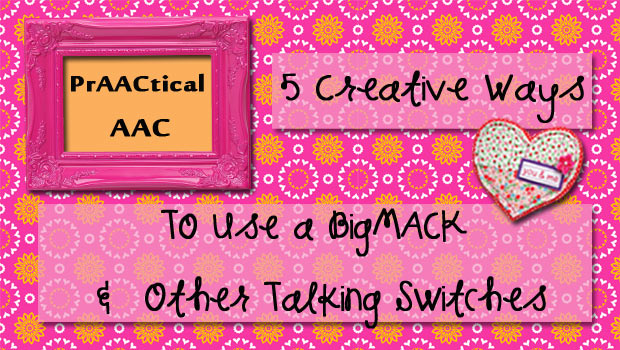
We all have them. We all use them. We all get in ruts. Here are some creative uses for using single message voice output communication aids. — 1. To build letter-sound correspondence: Record the sound that the letter makes so that the AAC user can participate in phonological awareness activities. Works great with multiple talking switches, each programmed with a different letter sound. – 2. To give time-limited access to a battery-operated toy: By using the Big Mack as a switch, you can record a message and the toy will stay on for the length of the message. Great for creating teachable moments to practice recurrence and cause/effect in a meaningful way. – 3. To build support communicators who are learning 2-switch step scanning: With this type of scanning, we use one switch to move the highlighted item and the other to select it. By using a talking switch, you can... [Read More...]
February 6, 2012
by Carole Zangari -
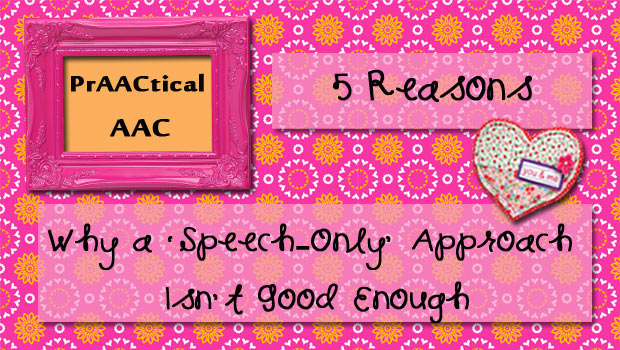
I’m trying to learn to see the good in all things, even when it is not immediately apparent. Lucky for me, the universe just keeps tossing me opportunities to practice my emerging skill in this area. – Case in point: A phone conversation with an SLP serving a kindergarten child with developmental disabilities. “We’re working on speech right now, especially oral motor exercises. He can almost extend his tongue past his lips. And in the last year he’s been vocalizing a little louder. Oh, and Mom heard him say ‘Pa’ in the car last week, too! I wish progress were faster but he’s come a long way.” – No mention of the fact that he has an expressive vocabulary of, um. ZERO. – No consideration that if we continue with this current rate of learning, he’ll be able to say hist first three-word sentence at about the same time... [Read More...]









